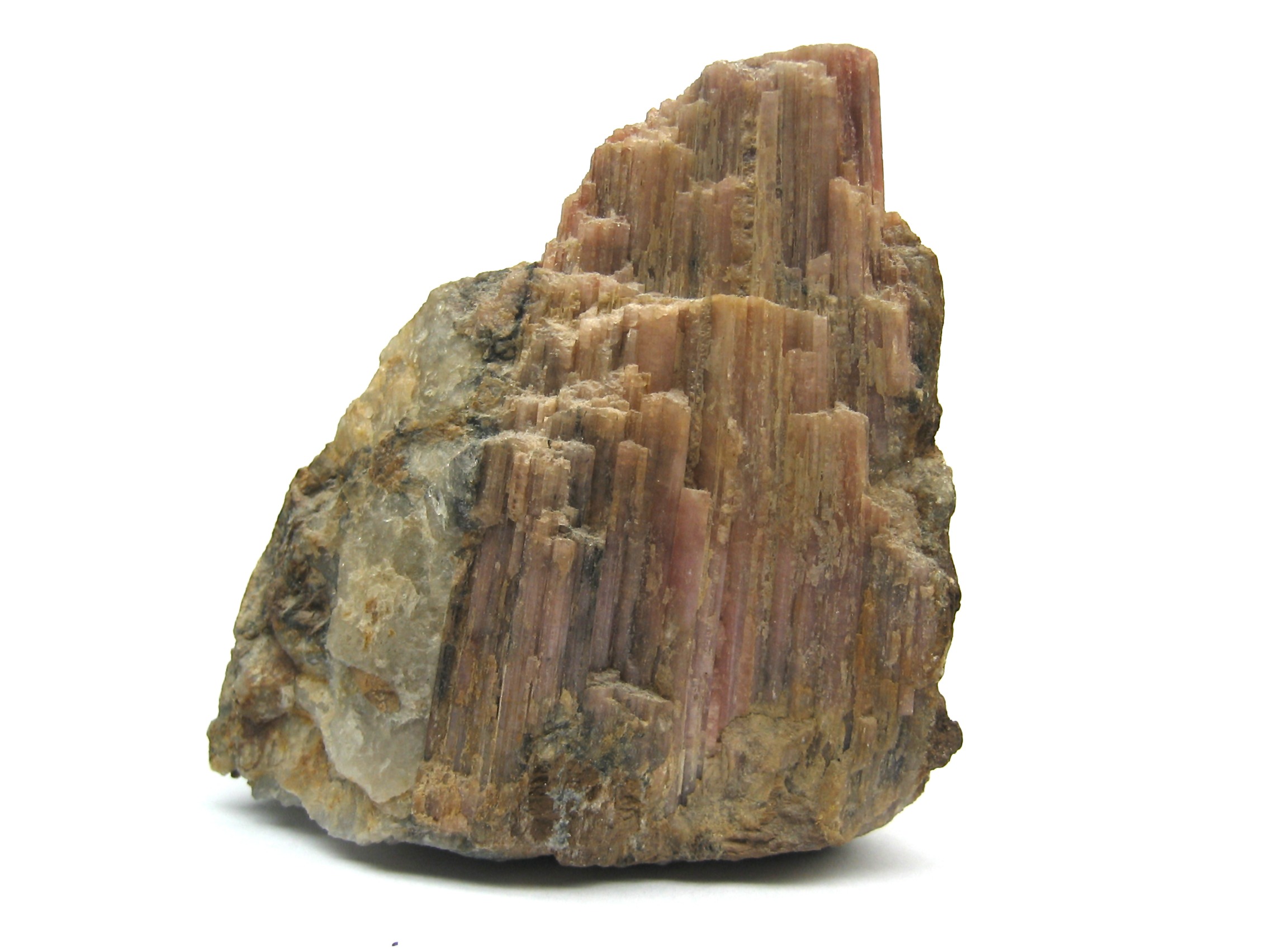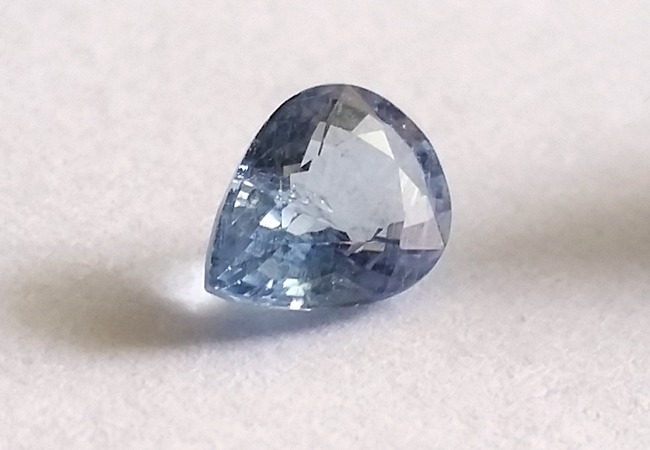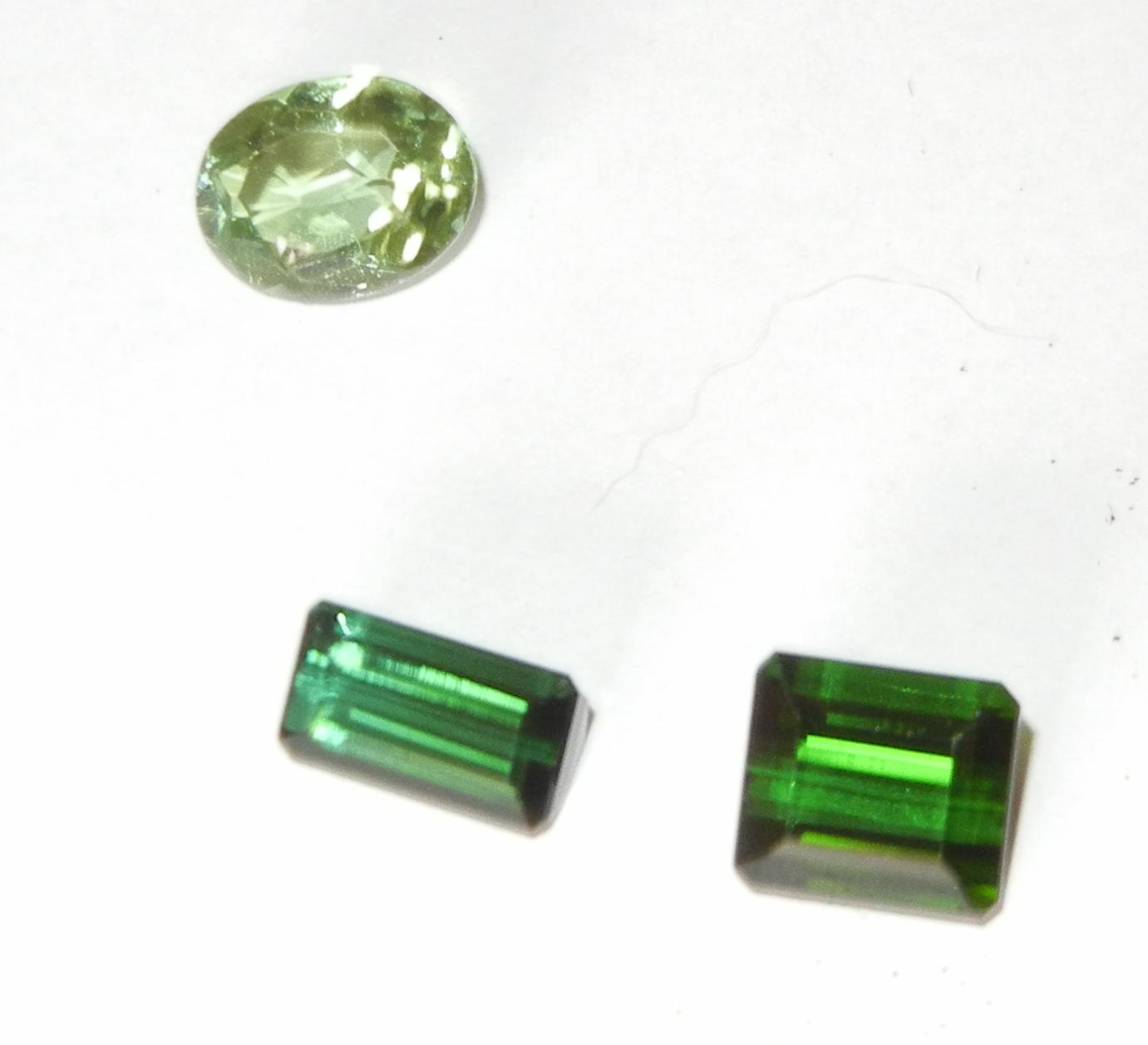The name “tourmaline” refers to a large group of boron silicate materials. These minerals have similar physical characteristics and a common crystal structure, although their chemical composition varies with each other. Tourmaline occurs in more hues and color combinations than any other mineral group due to the vast diversity of compositions and color zoning within crystals.
It is the birthstone for the month of October and is one of the most well-liked gemstones in the world. Due to its popular use, tourmaline is simple to locate at jewelry shops. Collectors of mineral specimens also admire well-formed tourmaline crystals. Specimens with striking hues and crystal structures may fetch thousands of dollars on the market.
Tourmalines come in a dazzling array of hues. Tourmaline occurs in a variety of hues of almost every color, making it one of the gem species with the broadest color spectrum.
Many different colors of tourmaline have given rise to their trade names:
1. Rubellite
Rubellite is a name for pink, red, purplish red, orangy red, or brownish red tourmaline, although some in the trade argue that the term should not apply to pink tourmaline.
2. Indicolite
It is a dark violetish blue, blue, or greenish blue tourmaline.
3. Paraiba
Paraiba is known for its vivid violet-blue, green-blue, or blue tourmaline from the state of Paraíba, Brazil.
4. Chrome Tourmaline
Chrome tourmaline has a vivid green color. Despite its name, it is mostly vanadium-colored, the same substance that gives many emeralds from Brazil and Africa their green hue.
5. Parti-colored tourmaline
Particolored tourmaline shows several colors. Green and pink are one of the most typical color combos, although there are many different options.
6. Watermelon tourmaline
Pink in the center and green on the exterior describe the watermelon tourmaline. Its material’s crystals are commonly cut into slices to highlight this unique pattern.
Brief History of Tourmaline
The Dutch East India Company shipped massive amounts of vividly colored Ceylonese gem tourmalines to Europe to meet the demand for curios and stones. Because of its ability to attract and then repel hot ashes because of its pyroelectric characteristics, tourmaline was frequently referred to as the “Ceylonese Sri Lankan Magnet.”
Chemists in the 19th century utilized tourmalines to polarize light by beaming rays onto the gem’s polished and cut surface.
Sources of Tourmaline
Since around 500 years ago, Brazil has been the primary supplier of tourmaline around the globe. Portuguese explorers acquired green and blue tourmaline in the 1500s from natives and while gold-panning in streams. They sent these vivid stones back to Portugal, where they were cut into jewels and used to create jewelry for affluent people and aristocracy, believing them to be emeralds and sapphires.
The pegmatite deposits of Minas Gerais, Brazil, have seen a consistent stream of tourmaline discoveries since the late 1800s. Since then, millions of carats of tourmaline in a variety of hues, including a significant amount of bicolor material, have been mined. The most significant source of tourmaline for the global gem and jewelry industry has been this diverse stream of tourmaline from Brazil.
Following the 1821 discovery of tourmaline close to the town of Paris, Maine, the first commercial gemstone mine was established in the United States. Significant quantities of pink and green tourmaline have been produced in Maine over the past 200 years from a variety of sites.
The southern Californian tourmaline mines have historically been the main source of tourmaline in the United States. There has been mining for tourmaline since the late 1800s. The most significant gem material mined in California, in terms of total dollar worth, has been tourmaline. The majority of this manufacturing took place in the counties of Riverside and San Diego over a century ago. There were massive amounts of red tourmaline mined and sent to China, where it was used to create jewelry, snuff bottles, sculptures, and many other things. Limited-scale mining is now producing a small amount of tourmaline. Today’s miners sell many of the top examples of their best output as mineral specimens.
Today, discoveries of gem and specimen tourmaline of various kinds are made in:
- Brazil
- Afghanistan
- Many parts of Africa
- Tanzania
- Mozambique
- Nigeria
- United States
- Kenya
- Italy
- Switzerland
- Madagascar
- Malawi
- Namibia
Tourmaline as a Healing Crystal
Tourmaline is a known gemstone with several healing crystal characteristics that is well-known for its beauty and healing properties.
- keeps you focused on the present to reduce anxiety
- shields you from electromagnetic pollution
- defends you from harmful energy
- improves grounding
- decreases gypsy stress
- boosts your physical energy
- decreases toxicity and negative thinking
- reduces the pain caused by arthritis
- increases optimism and creativity
- boosts the immune system
As it works to balance yin and yang, tourmaline helps with spinal adjustments by releasing any stress you may be carrying in your body. Tourmaline is a gemstone for clearing obstructions since it improves energy flow in its capacity as a healing crystal. Many people place tourmaline healing stones over their chakras to cleanse their aura, eliminate obstructions, disperse bad energy, and highlight any potential issues they may be holding.
Tourmaline is a healing crystal that fosters self-confidence, reduces fear, and aids in understanding oneself and others. It draws creativity, kindness, wealth, and tolerance. Tourmaline balances the right and left hemispheres of the brain and transforms negative energy into positive as a potent mental healer. Additionally, it can enhance coordination and has a history of treating dyslexia and psychosis.
Tourmaline transforms dense, slow-moving energy into lighter vibratory energy while also cleansing and purifying it. It ties spiritual life to the material world. This stone creates a wall of protection around your body while clearing and balancing each chakra.
Is Tourmaline good for jewelry?
Despite not being the hardest gemstone, tourmaline should hold up well in an engagement ring setting. A tourmaline’s hardness ranges from 7 to 7.5, making it more scratch-prone than a diamond or sapphire.
How much does Tourmaline cost?
Depending on the type and grade, tourmaline costs can vary greatly. The costliest tourmalines are those from Paraba, which may cost hundreds of dollars per carat. The price per carat for fine indicolites, bi-colors, and chrome tourmalines can reach $1000 and more. Other variants are offered for costs ranging from $50 to 750 per carat, depending on the color’s intensity.
Interesting facts about Tourmaline
- Tourmaline comes in almost every color
- Tourmaline can be as clear as a diamond
- Tourmaline is one of the most sought gems in the world
- Tourmaline was not originally recognized as its stone
Conclusion
The birthstone for the month of October is known as a healing stone for those who have a broken heart since it fosters love, subdues emotional anguish, and eliminates upsetting emotions. It soothes the unfavorable feelings that strain relationships.




